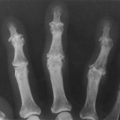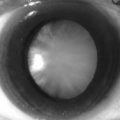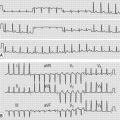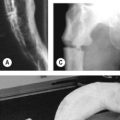227 Nephrotic syndrome
Salient features
History
• History of diabetes (N Engl J Med 1998;338:1202–11)
• History of acute glomerulonephritis, streptococcal sore throat
• Medications: NSAIDs, captopril, street heroin, gold, pencillamine, lithium, chlorpropamide, rifampin, tolbutamide
• History of SLE, vasculitides, amyloidosis
• Neoplasms: Hodgkin’s and other lymphoma, solid tumours
• Familial history: sickle cell disease, partial lipodystrophy (p. 611), Alports syndrome
Questions
What causes this syndrome?
• Glomerular disease: minimal change glomerulonephritis, membranous glomerulonephritis, proliferative glomerulonephritis.
• Systemic disease: diabetes mellitus, SLE, amyloidosis, drugs (captopril, gold, penicillamine, street heroin), Hodgkin’s disease, syphilis, malaria, HIV, cancer, hepatitis B, multiple myeloma, renal primary (AL) amyloidosis.
How would you investigate these patients?
• Creatinine clearance, 24-hour urinary protein, urine electrophoresis
• Urea and electrolytes, serum creatinine, albumin
• Serum cholesterol (dyslipidaemia is caused by both overproduction and impaired catabolism of apolipoprotein B-containing lipoproteins)
Advanced-level questions
What is the treatment of patients with nephrotic syndrome?
• Diuresis: furosemide (acts in the ascending thick loop of Henle) with thiazides (reduce sodium absorption in the distal nephron) and potassium-sparing diuretics
• Prevention of thromboemboli: heparin, anticoagulants and support stockings when patients have nephrotic proteinuria, an albumin level <20 g/l or both
• Infusion of hyperoncotic albumin should only be tried if symptomatic hypovolaemia is present
• Plasma ultrafiltration in severe cases
• Renal ablation by bilateral nephrectomy or embolization of the renal artery may be indicated to avoid serious risks of severe hypoproteinaemia and hypovolaemia
• ACE inhibitors or angiotensin receptor blockers is indicated even in normotensive patients to reduce proteinuria
• Colchine in familial Mediterranean fever
• Interferon-alfa in hepatitis B-associated nephrotic syndrome, hepatitis-C associated membranoproliferative glomerulonephritis and cryoglobulinaemia







